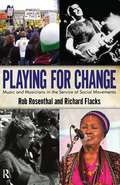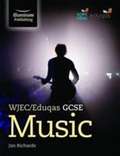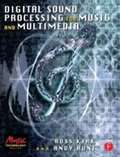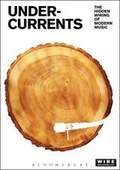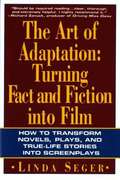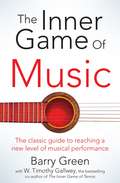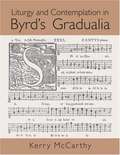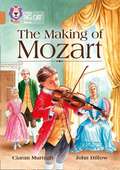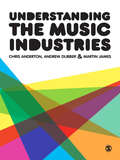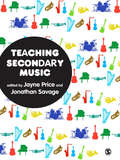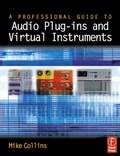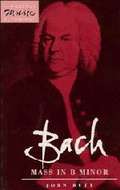- Table View
- List View
Playing for Change: Music and Musicians in the Service of Social Movements
by Rob Rosenthal Richard FlacksAlthough music is known to be part of the great social movements that have rocked the world, its specific contribution to political struggle has rarely been closely analyzed. Is it truly the 'lifeblood' of movements, as some have declared, or merely the entertainment between the speeches? Drawing on interviews, case studies and musical and lyrical analysis, Rosenthal and Flacks offer a brilliant analysis and a wide-ranging look at the use of music in movements, in the US and elsewhere, over the past hundred years. From their interviews, the voices of Pete Seeger, Ani DiFranco, Tom Morello, Holly Near, and many others enliven this highly readable book.
WJEC/Eduqas GCSE Music (PDF)
by Jan RichardsThis book is designed to help with the WJEC/Eduqas GCSE Music course. It is divided into five sections: one section on each of the four areas of study - Section 1 Musical Forms and Devices, Section 2 Music for Ensemble, Section 3 Film Music and Section 4 Popular Music - and a final section, Section 5 GCSE Music: Student Support on student-specific material.
Digital Sound Processing For Music And Multimedia
by Ross Kirk Andy HuntProvides an introduction to the nature, synthesis and transformation of sound which forms the basis of digital sound processing for music and multimedia. Background information in computer techniques is included so that you can write computer algorithms to realise new processes central to your own musical and sound processing ideas. Finally, material is inlcuded to explain the way in which people contribute to the development of new kinds of performance and composition systems. Key features of the book include: · Contents structured into free-standing parts for easy navigation · `Flow lines' to suggest alternative paths through the book, depending on the primary interest of the reader. · Practical examples are contained on a supporting website. Digital Sound Processing can be used by anyone, whether from an audio engineering, musical or music technology perspective. Digital sound processing in its various spheres - music technology, studio systems and multimedia - are witnessing the dawning of a new age. The opportunities for involvement in the expansion and development of sound transformation, musical performance and composition are unprecedented. The supporting website (www. york. ac. uk/inst/mustech/dspmm. htm) contains working examples of computer techniques, music synthesis and sound processing.
The Performance and Popular Music: History, Place and Time (PDF)
by Derek Scott Ian InglisSince the emergence of rock'n'roll in the early 1950s, there have been a number of live musical performances that were not only memorable in themselves, but became hugely influential in the way they shaped the subsequent trajectory and development of popular music. Each, in its own way, introduced new styles, confronted existing practices, shifted accepted definitions, and provided templates for others to follow. Performance and Popular Music explores these processes by focusing on some of the specific occasions when such transformations occurred An international array of scholars reveal that it is through the (often disruptive) dynamics of performance âe" and the interaction between performer and audience âe" that patterns of musical change and innovation can best be recognised. Through multi-disciplinary analyses which consider the history, place and time of each event, the performances are located within their social and professional contexts, and their immediate and long-term musical consequences considered. From the Beatles and Bob Dylan to Michael Jackson and Madonna, from Woodstock and Monterey to Altamont and Live Aid, this book provides an indispensable assessment of the importance of live performance in the practice of popular music, and an essential guide to some of the key moments in its history. Alternate ISBN 9780754640561
Undercurrents: The Hidden Wiring Of Modern Music (PDF)
by The Wire Rob YoungFor the last twenty years The Wire has fearlessly bypassed fashion in it's search to expose the most innovative, radical, and compelling music from every genre all across the world. As listeners have grown increasingly eclectic and adventurous in their tastes, The Wire has emerged as the most authoritative source on modern music. In Undercurrents some of the best music writers of our time uncover the hidden wiring of the past century's most influential music. Ian Penman discusses how the microphone transformed the human voice and made phantom presences of great singers such as Billie Holiday, Robert Johnson, and Brian Wilson. Christoph Cox demonstrates how the pioneers of live electronic music, the West Coast ensemble Sonic Arts Union, redefined virtuosity for the electronic age. Philip Smith and Peter Shapiro examine Harry Smith's Smithsonian Anthology of American Folk Music, which led to a massive reappraisal of musical values that went far beyond the folk music revival. Music explored in Undercurrents ranges through avant rock, jazz, hiphop, electronica, global music, and contemporary "classical. "
The Art of Adaptation: Turning Fact and Fiction into Film (PDF)
by Linda SegerAdaptations have long been a mainstay of Hollywood and the television networks. Indeed, most Academy Award- and Emmy Award-winning films have been adaptations of novels, plays, or true-life stories. Linda Seger, author of two acclaimed books on scriptwriting, now offers a comprehensive handbook for screenwriters, producers, and directors who want to successfully transform fictional or factual material into film. Seger tells how to analyze source material to understand why some of it resists adaptation. She then gives practical methods for translating story, characters, themes, and style into film. A final section details essential information on how to adapt material and how to protect oneself legally
The Inner Game Of Music
by Barry Green W. Timothy GallweyThe bestselling guide to improving musical performanceThe Inner Game of Music is the battle that all musicians have to fight against elusive opponents such as nervousness, self-doubt and fear of failure. Using the world-famous Inner Game principles, developed by bestselling author Timothy Gallwey, acclaimed musician Barry Green explains the basic principles of 'natural learning' and shows how you can apply them to reach a new level of musical application and performance. In precise, easy to understand language, Green and Gallwey explain how natural skills - such as awareness, trust and willpower - can be nurtured and enhanced. Through a series of tailored exercises The Inner Game of Music demonstrates the ways in which musicians can achieve exact intonations, artistic phrasing and improved technique. There are also chapters on ensemble playing, improvisation, composition and creativity, as well as listening skills - an essential part of the Inner Game. Following a methodology with a proven track record for generations of aspiring and professional musicians, The Inner Game of Music is invaluable to anyone seriously interested in music, and is guaranteed to deliver positive results whether you are a student, teacher, performer, or simply an appreciative listener.
Liturgy and Contemplation in Byrd’s Gradualia
by Kerry MccarthyWilliam Byrd s Gradualia is one of the most unusual and elaborate musical works of the English Renaissance. This large collection of liturgical music, 109 pieces in all, was written for clandestine use by English Catholics at a time when they were forbidden to practice their religion in public. When Byrd began to compose the Gradualia, he turned from the penitential and polemical extravagances of his earlier Latin motets to the narrow, carefully ordered world of the Counter-Reformation liturgy. It was in this new context, cut off from his familiar practice of choosing colorful texts and setting them at length, that he first wrote about the "hidden and mysterious power" of sacred words to evoke a creative response. Liturgy and Contemplation in Byrd s Gradualia responds to Byrd s own testimony by exploring how he read the texts of the Mass and the events of the church calendar. Kerry McCarthy examines early modern English Catholic attitudes toward liturgical practice, meditation, and what the composer himself called "thinking over divine things. " She draws on a wide range of contemporary sources devotional treatises, commentaries on the Mass, poetry, memoirs, letters, and Byrd s dedicatory prefaces and revisits the Gradualia in light of this evidence. The book offers a case study of how one artist reimagined the creative process in the final decades of his life. " 9786611313791
Liturgy and Contemplation in Byrd’s Gradualia (PDF)
by Kerry MccarthyWilliam Byrd s Gradualia is one of the most unusual and elaborate musical works of the English Renaissance. This large collection of liturgical music, 109 pieces in all, was written for clandestine use by English Catholics at a time when they were forbidden to practice their religion in public. When Byrd began to compose the Gradualia, he turned from the penitential and polemical extravagances of his earlier Latin motets to the narrow, carefully ordered world of the Counter-Reformation liturgy. It was in this new context, cut off from his familiar practice of choosing colorful texts and setting them at length, that he first wrote about the "hidden and mysterious power" of sacred words to evoke a creative response. Liturgy and Contemplation in Byrd s Gradualia responds to Byrd s own testimony by exploring how he read the texts of the Mass and the events of the church calendar. Kerry McCarthy examines early modern English Catholic attitudes toward liturgical practice, meditation, and what the composer himself called "thinking over divine things. " She draws on a wide range of contemporary sources devotional treatises, commentaries on the Mass, poetry, memoirs, letters, and Byrd s dedicatory prefaces and revisits the Gradualia in light of this evidence. The book offers a case study of how one artist reimagined the creative process in the final decades of his life. " 9786611313791
Denes Agay's Learning To Play Piano - Book 1 (PDF)
by Denes Agay(Yorktown). A progression of melodic pieces and studies teaching the basics step by step. A fresh, unhurried and sound approach to piano study. It offers a veritable treasure of delightfully melodic, inventive repertoire to illustrate and correlate technique, theory, and musicianship.
Collins Big Cat, Band 12, Copper: The Making of Mozart (PDF)
by Ciaran Murtagh Collins Big Cat StaffGet ready to meet a small boy with a big talent! Wolfgang Amadeus Mozart was composing music and travelling the world to perform for kings and emperors when he was only eight years old. This is his story. * Copper/Band 12 books provide more complex plots and longer chapters that develop reading stamina. * Text type - An information book. * The book is organised into short chapters to help children practise the skills of locating and identifying important information. * The glossary and index on pages 28 and 29 can be used to develop children's information retrieval skills further. * Curriculum links - Music
Understanding the Music Industries
by Andrew Dubber Chris Anderton Martin JamesEveryone knows music is big business, but do you really understand how ideas and inspiration become songs, products, downloads, concerts and careers? This textbook guides students to a full understanding of the processes that drive the music industries. More than just an expose or 'how to' guide, this book gives students the tools to make sense of technological change, socio-cultural processes, and the constantly shifting music business environment, putting them in the front line of innovation and entrepreneurship in the future. Packed with case studies, this book: • Takes the reader on a journey from Glastonbury and the X-Factor to house concerts and crowd-funded releases; • Demystifies management, publishing and recording contracts, and the world of copyright, intellectual property and music piracy; • Explains how digital technologies have changed almost all aspects of music making, performing, promotion and consumption; • Explores all levels of the music industries, from micro-independent businesses to corporate conglomerates; • Enables students to meet the challenge of the transforming music industries. This is the must-have primer for understanding and getting ahead in the music industries. It is essential reading for students of popular music in media studies, sociology and musicology.
Teaching Secondary Music
by Jayne Price Jonathan SavageDesigned to support teachers in developing new strategies and pedagogies for teaching music, and for teacher education students requiring a comprehensive overview of the subject Teaching Secondary Music provides a modern and accessible insight into the key issues in music education at secondary level. Focusing on the nature of musical understanding and how to facilitate and assess musical progress, the editors bring together a team of experienced music educators leading the programme of support for the new secondary curriculum. Supported with practical examples, case studies and resources exploring effective practice, Teaching Secondary Music covers the key concepts and approaches which underpin good practice in secondary music education. These include: -How music relates to other curriculum subjects -Ways of implementing newer aspects of the curriculum -The music industry and intellectual property rights -Working with a range of musicians -Using ICT as a tool for musical performance -Developing musical leadership This book is essential reading for PGCE Secondary music specialists and practising music teachers. Jayne Price is the Music Education Coordinator in the School of Education and Professional Development at the University of Huddersfield. Jonathan Savage is a Reader in Education at the Institute of Education, Manchester Metropolitan University.
A Professional Guide to Audio Plug-ins and Virtual Instruments
by Mike CollinsIf you are an audio professional needing a complete reference to the complex world of plug-ins and virtual instruments, look no further. Mike Collins, author of Pro Tools for Music Production, has meticulously surveyed the scene, showing what's available and how they integrate into the various host platforms. The book explains the differences between TDM, RTS, MAS and VST plug-ins, how they can be used with different MIDI + Audio programs and shows the range of options available. It also explains virtual instruments and how these can be used as either plug-ins or stand alone products. A must for every recording studio. The book combines explanations, overviews and key concepts with practical considerations and hands-on examples. The reader will gain a broad understanding of the options available, how they work and the possibilities for integration with systems as well as the end result. The book also includes a section on how to write your own plug-ins and a suggested standard plug-ins portfolio for those wanting to get started quickly.
A Professional Guide to Audio Plug-ins and Virtual Instruments (PDF)
by Mike CollinsIf you are an audio professional needing a complete reference to the complex world of plug-ins and virtual instruments, look no further. Mike Collins, author of Pro Tools for Music Production, has meticulously surveyed the scene, showing what's available and how they integrate into the various host platforms. The book explains the differences between TDM, RTS, MAS and VST plug-ins, how they can be used with different MIDI + Audio programs and shows the range of options available. It also explains virtual instruments and how these can be used as either plug-ins or stand alone products. A must for every recording studio. The book combines explanations, overviews and key concepts with practical considerations and hands-on examples. The reader will gain a broad understanding of the options available, how they work and the possibilities for integration with systems as well as the end result. The book also includes a section on how to write your own plug-ins and a suggested standard plug-ins portfolio for those wanting to get started quickly.
Bach: Mass In B Minor (PDF)
by John ButtThe Mass in B Minor is arguably Bach's greatest single work. In this short guide John Butt considers the work from many angles offering the reader basic information in a concise and accessible form. The Mass in B Minor is fraught with difficulties regarding its origin, and ambiguities concerning its function. John Butt looks again at the historical sources and provides an up-to-date summary of existing research and opinions together with new insights of his own. He gives a vivid account of the work's genesis, its historical context, and its reception by later generations. One chapter considers the work movement by movement providing the text in both Latin and English. The final group of chapters on the music itself suggests some new approaches to the work - its forms, style and overall structure - which are both critically and historically based. This is an informative and lucid guide, valuable for student and music lover alike. 9780521387163
Bagpipes (large print)
by RnibThis is an image of Scottish bagpipes, a traditional musical instrument. There is a locator dot shown which will be at the top left of the page when the image is the correct way up. The image shows a set of Scottish bagpipes, comprised of a bag, a chanter, a blowpipe, and three drones.The bag is in the bottom centre of the page. To the left, in the bottom left corner of the page is the chanter. It has seven fingering holes. Up the page from the bag are from left to right: the blowpipe, the bass drone, and two tenor drones. The three drones are connected by a cord, which links each of their tops. There are two decorative tassels on each end of the cord, one to the right of the bass drone and one to the right of the tenor drone on the right. The bagpipes are held against the players body with the bag under the right elbow. The blowpipe is held in the players mouth and the chanter in both hands with fingers covering the holes. The bagpipes are filled with air by bowing into the blowpipe. The air is squeezed out through reeds in the chanter and the drone pipes, which all produce musical notes. The drones each produce only one note. The melody is played on the chanter by covering different combinations of holes.
A basic guide to playing the Clarinet (UEB Contracted)
by Markeaton SchoolThis is a simple four-page guide to the basics of clarinet playing. There is a diagram of a clarinet on page one, an introduction to reading music on pages two and three, and how to play the notes E, D and C on the clarinet, on page four.
Bagpipes (UEB uncontracted)
by RnibThis is an image of Scottish bagpipes, a traditional musical instrument. There is a locator dot shown which will be at the top left of the page when the image is the correct way up. The image shows a set of Scottish bagpipes, comprised of a bag, a chanter, a blowpipe, and three drones.The bag is in the bottom centre of the page. To the left, in the bottom left corner of the page is the chanter. It has seven fingering holes. Up the page from the bag are from left to right: the blowpipe, the bass drone, and two tenor drones. The three drones are connected by a cord, which links each of their tops. There are two decorative tassels on each end of the cord, one to the right of the bass drone and one to the right of the tenor drone on the right. The bagpipes are held against the players body with the bag under the right elbow. The blowpipe is held in the players mouth and the chanter in both hands with fingers covering the holes. The bagpipes are filled with air by bowing into the blowpipe. The air is squeezed out through reeds in the chanter and the drone pipes, which all produce musical notes. The drones each produce only one note. The melody is played on the chanter by covering different combinations of holes.
Bagpipes (UEB contracted)
by RnibThis is an image of Scottish bagpipes, a traditional musical instrument. There is a locator dot shown which will be at the top left of the page when the image is the correct way up. The image shows a set of Scottish bagpipes, comprised of a bag, a chanter, a blowpipe, and three drones.The bag is in the bottom centre of the page. To the left, in the bottom left corner of the page is the chanter. It has seven fingering holes. Up the page from the bag are from left to right: the blowpipe, the bass drone, and two tenor drones. The three drones are connected by a cord, which links each of their tops. There are two decorative tassels on each end of the cord, one to the right of the bass drone and one to the right of the tenor drone on the right. The bagpipes are held against the players body with the bag under the right elbow. The blowpipe is held in the players mouth and the chanter in both hands with fingers covering the holes. The bagpipes are filled with air by bowing into the blowpipe. The air is squeezed out through reeds in the chanter and the drone pipes, which all produce musical notes. The drones each produce only one note. The melody is played on the chanter by covering different combinations of holes.
Bluegrass Banjo (large print)
by RnibThis is an image of a bluegrass banjo seen from the front. It is a fretted musical instrument with five strings, a drum-type head, and a resonator, which makes the vibrations of the strings sound louder. There is a locator dot shown which will be at the top left of the page when the image is the correct way up.The round shape of the resonator is in the bottom left of the page. The heads tension ring is inside this. It has screws all around its edge to adjust the tightness of the heads skin.Banjos five strings are fixed to its tailpiece at the bottom left of the resonator. They go up and right over the bridge to the long neck of the banjo. The neck has pieces of wire fixed across its fingerboard, at right angles to the strings: these are the frets. Some of the frets have position markers inlaid into the fingerboard.There is a tuning peg part of the way along the top edge of the neck for the fifth string. The peg head is in the top right of the image with pegs for tuning the other four strings.The banjo is played by pressing the strings onto the frets to change the notes with the left hand fingers, and using the right hand fingers to pluck and strum the strings.
Bluegrass Banjo (UEB contracted)
by RnibThis is an image of a bluegrass banjo seen from the front. It is a fretted musical instrument with five strings, a drum-type head, and a resonator, which makes the vibrations of the strings sound louder. There is a locator dot shown which will be at the top left of the page when the image is the correct way up.The round shape of the resonator is in the bottom left of the page. The heads tension ring is inside this. It has screws all around its edge to adjust the tightness of the heads skin.Banjos five strings are fixed to its tailpiece at the bottom left of the resonator. They go up and right over the bridge to the long neck of the banjo. The neck has pieces of wire fixed across its fingerboard, at right angles to the strings: these are the frets. Some of the frets have position markers inlaid into the fingerboard.There is a tuning peg part of the way along the top edge of the neck for the fifth string. The peg head is in the top right of the image with pegs for tuning the other four strings.The banjo is played by pressing the strings onto the frets to change the notes with the left hand fingers, and using the right hand fingers to pluck and strum the strings.
Bluegrass banjo (UEB uncontracted)
by RnibThis is an image of a bluegrass banjo seen from the front. It is a fretted musical instrument with five strings, a drum-type head, and a resonator, which makes the vibrations of the strings sound louder. There is a locator dot shown which will be at the top left of the page when the image is the correct way up.The round shape of the resonator is in the bottom left of the page. The heads tension ring is inside this. It has screws all around its edge to adjust the tightness of the heads skin.Banjos five strings are fixed to its tailpiece at the bottom left of the resonator. They go up and right over the bridge to the long neck of the banjo. The neck has pieces of wire fixed across its fingerboard, at right angles to the strings: these are the frets. Some of the frets have position markers inlaid into the fingerboard.There is a tuning peg part of the way along the top edge of the neck for the fifth string. The peg head is in the top right of the image with pegs for tuning the other four strings.The banjo is played by pressing the strings onto the frets to change the notes with the left hand fingers, and using the right hand fingers to pluck and strum the strings.
Congas (large print)
by RnibThis is an image of a pair of congas (cuban drums) seen from the side. There is a locator dot shown which will be at the top left of the page when the image is the correct way up. The conga, called a tumbadora in Spanish, is a tall, narrow, single-headed Cuban drum thought to have originated in central Africa.There is a drum on the left of the page and a slightly smaller one on the right. Between the two drums is a stand going down to the bottom of the page. Only two of its three legs can be found.The drums heads are at the top of the page. Down the page are the tension rings, and the screws for adjusting tension of the drum skins. The drums are circular in cross section and open at the bottom; this cannot be seen as they are viewed from the side. They are played by hitting the skins at the top of page, with the hands and fingers. The smaller drum on the right has a higher note when struck.
Double Bass (UEB uncontracted)
by Markeaton SchoolThis is a tactile image of a double bass, seen from the front standing vertically, with its tuning pegs at the top of the page and its curving body at the bottom of the page. The strings have not been shown on this picture.
